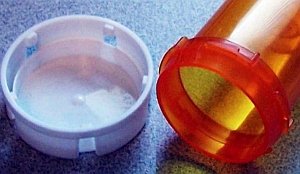
How can India's drying drug pipeline be revived?
It is estimated that about 40-to-60 percent of the Indian population still doesn't have access to vital life saving drugs. The looming threat of increased mortality rate due to various diseases, globally in general and developing nations in particular, has become a matter of concern to both the companies as well as policymakers. But, as there is a molecule deficit due to reasons ranging from strict regulatory agencies, efficiency of drugs, and global austerity measures, the question now is what can be the quick fix solution that can bring back hope?
Currently, many players are evolving their business models to incorporate more innovations, not only through in house R&D but also through evolving newer delivery systems, novel formulations, research collaborations, and business acquisitions. However, to build a sustainable ecosystem, the full breadth of capabilities required for innovation will need to be developed locally. According to Dr Rajesh Jain, joint managing director, Panacea Biotec, "With increased global demand and shrinking R&D pipelines, I believe that we need to increase the productivity. I still feel that generics are a reality and we have to adjust to that and work with the government to get quality generics."
Leveraging existing treasure
One may be puzzled that, if it really is the generics or the molecules that are important at this point of time? However, industry experts point out that, drug research has the inter-disciplinary and rich treasure of existing information on the already known drugs which cannot be ignored or sidelined.
Agrees Dr Nitya Anand, former director, Central Drug Research Institute (CDRI), believes that the focus has to be on the improvement of existing drugs into a new ones. "It has been once again proved that Indian drugs are full of quality parameters. The known uses of drugs must be taken up on a high scale in India too. The essential requirement now is a national repository having the collection of compounds and accurate screening processes (testing of compounds will help in long run)," said Dr Anand.
Dr Mahesh Patel, director, drug discovery, Wockhardt, is of the opinion that a balance has to maintained between the generics and the new molecules. Dr Patel feels that while generics are the best way to tackle the present situation yet the focus must also be on building the future pipeline of innovative drugs. "Apart from comparisons and having generic focus, leveraging existing drugs must also focus on stimulating on innovative drugs. Wockhardt is doing its bid and investments continue into various such projects."
Dr Tausif Monif, vice president, clinical pharmacology and pharmacokinetics, Ranbaxy Laboratories feels that both generics and alternate models in drug discovery are relevant today. He said, "There are tremendous opportunities in generic space and we have to continue exploring. Apart from that, the future also holds great promise in oral drug discovery. Better efficiency and patient compliance are the beneficial points."
Echoing similar sentiments, Dr YK Gupta, head, pharmacology, All India Institute of Medical Sciences (AIIMS) believes that the drying pipelines are a real matter of concern. He feels that innovation has to come right from the foundation level of education system. "In India, the translation is miniscule. The number of innovation centres at the universities need to be increased along with accountability too. Pharmacovigilance, which is a part of the MBBS curriculum that was approved by Medical Council of India (MCI) needs to be implemented," added Dr Gupta.
Trying hand at alternate models
Many believe that the existing models of research and development require a makeover. According to Dr Viraj Suvarna, medical director, Boehringer Ingelheim India, "The competitive collaboration is the need of the future. The essential thing here is not the product being best, rather than that the best part would be the reach and availability to the patients. The tie ups between the potential customers can also be a reality if it is realized by the companies."
"Strategic alliance, innovative technology and working exclusively with the government to provide the primary healthcare is very important. We have to consider the three A's and these are affordability, acceptability and availability," added Mr Arun Sahwney, CEO, Ranbaxy, who strongly opines that biotech and vaccine industry are going to be a very important part of this exercise.
Providing a comprehensive picture of what is going inside the industry, Dr Swapan Bhattacharya, managing director, TCG Life Sciences, said, "Most of the companies are facing generic cliff. At the same time a lot of licensing is also happening. While the big biopharma companies are trying to license late stage molecules, the smaller ones are entering into contract research and there is no doubt that these CROs are playing a role in development and hence, important in their cost-effectiveness."
Dr Rajesh Gokhale, director, Institute of Genomics and Integrative Biology (IGIB) is quite optimistic about the drug discovery efforts being put into various areas. He opined that systems biology is quite relevant to the drug discovery. Citing an example he said, "Isoniazid, an antibiotic that is used to treat tuberculosis targets 16 proteins on Mycobacterium tuberculorsis. The biggest challenge is taking up the conservative model rather than alternative model, where no target is defined."
In order to capitalize on its competitive advantages and remain ahead of competing markets, India must take active steps to attract research investment. These include the introduction of self-financing and revenue-generating fiscal incentives, encouragement of capacity building measures, continuing regulatory reform, and initiatives in specific research oriented education and training. The timely implementation of these measures will be critical to build a pipeline or what we may call a lifeline for the future needs of healthcare industry.




